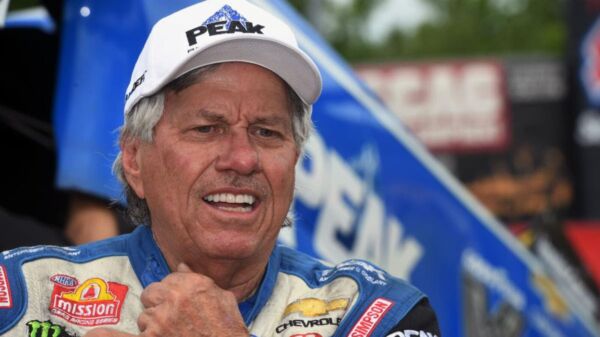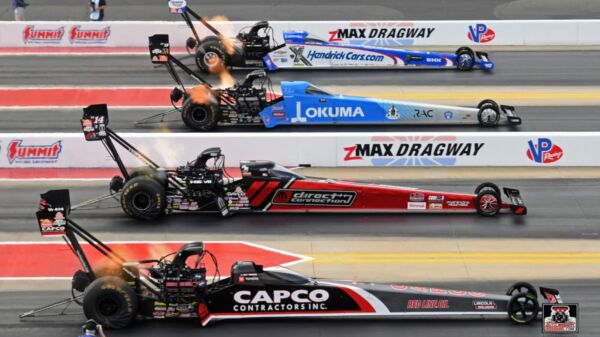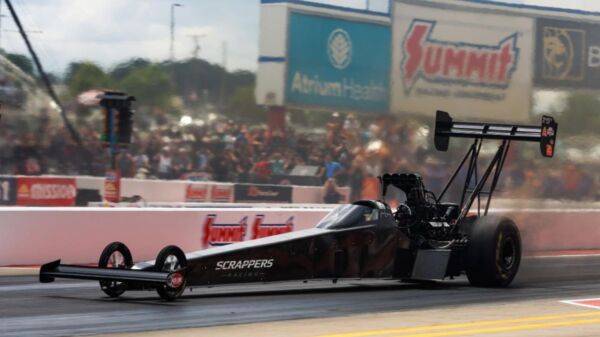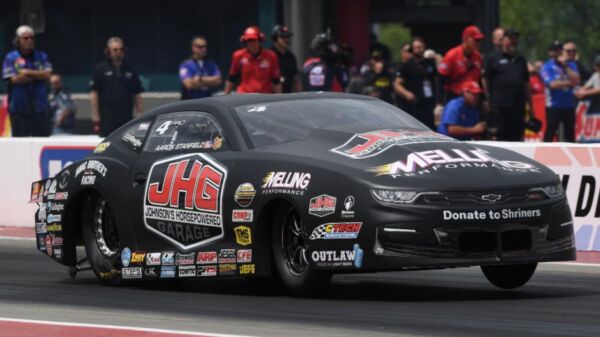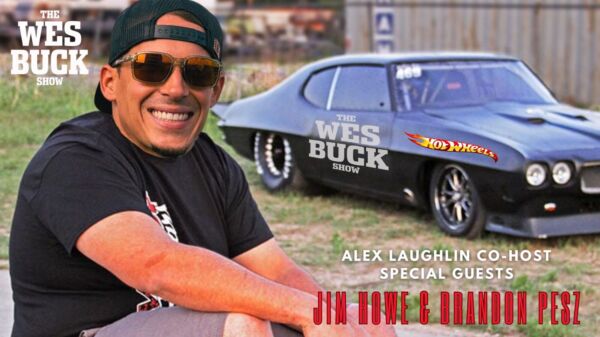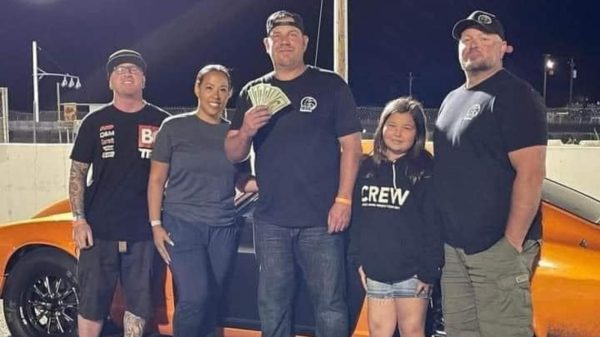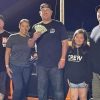In January of 2014, a new organization came to life to provide a new home for a growing group of eighth-mile drag racers. It came on the heels of a tumultuous 2013 season for the American Drag Racing League (ADRL), which had changed hands a couple times since Kenny Nowling founded it in the mid-2000s. The new Professional Drag Racers Association (PDRA) took a “for racers, by racers” approach, with former ADRL racers and car owners Jason and Mitchell Scruggs, Gene Hector, Roger Henson, and Tommy Franklin banding together as the founding partners.
“Our goal is to give outlaw doorslammer racers, as well as all the fans, track operators, and sponsors who have supported this kind of racing over the years, an organization they can be proud of,” said Jason Scruggs, a longtime Pro Extreme driver, when the series was announced. “The PDRA is racer owned and racer operated, and while we understand that there will be a building process, we’re looking forward to a strong series in 2014.”
Over the 10 seasons that followed that announcement, the PDRA grew into a stable and competitive home for racers competing in several professional categories, a handful of sportsman eliminators, and two Jr. Dragster classes. Beyond a place for racers to enjoy their hobby at a high level, the series has become a crucial part of the drag racing economy, providing an outlet for the chassis builders, engine builders, manufacturers, tuners, and other professionals who provide products and services to the hundreds of racers who follow the eight-race series.
As the PDRA wraps up its 10th anniversary season, Drag Illustrated gathered several individuals who’ve played a role in the series for an in-depth look at the PDRA as told by the people who were a part of it.

Tommy Franklin and his wife, Judy, were brought in as the nitrous representatives in the original group of PDRA owners. While building a successful electrical contracting business, Tommy worked his way up through the drag racing ranks from his home tracks in Virginia to IHRA Pro Stock, Extreme Outlaw Pro Mod (EOPM), and ADRL Pro Nitrous before joining the PDRA ownership group. The Franklins are now the sole owners of the series, where Tommy is a three-time Pro Nitrous world champion. Tommy and Judy’s daughters, Amber and Ashley, have also competed in the series since they were old enough.
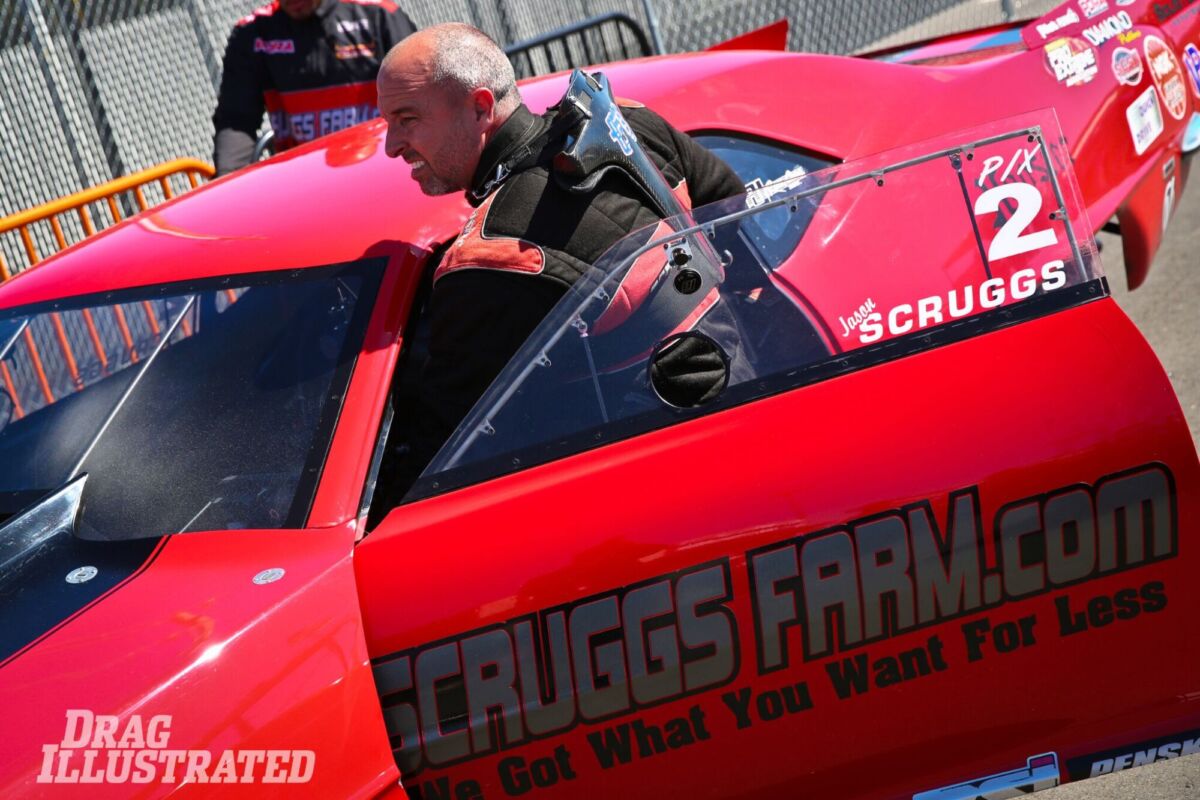
One of the other original owners, Jason Scruggs, raced in the now-defunct PDRA Pro Extreme division until the middle of the 2017 season, when he stepped away to spend more time with his family and their massive farming operation in Mississippi. Scruggs and his father and crew chief, Mitchell, now compete in NHRA Pro Mod, though he might make the occasional PDRA Pro Boost appearance in 2024.
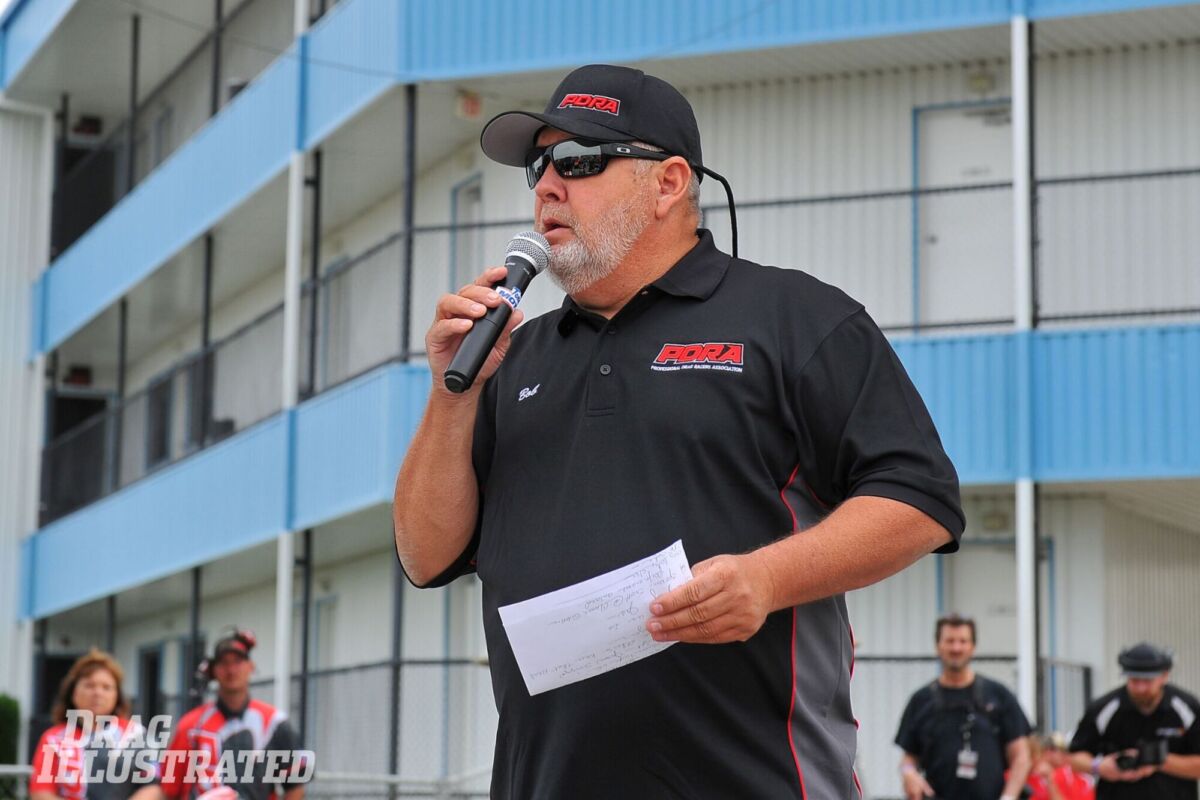
When the series was first announced, former Piedmont Dragway owner Bob Harris was named the race director. Rick Moore, who worked with Harris on the track’s popular Big Dog Shootout series, was also involved with race operations in the planning stages. Harris’ son, Jason, won the inaugural PDRA Pro Nitrous world championship after a dominant season. He also went on to win another Pro Nitrous title in 2018, as well as the 2023 Pro Boost title.
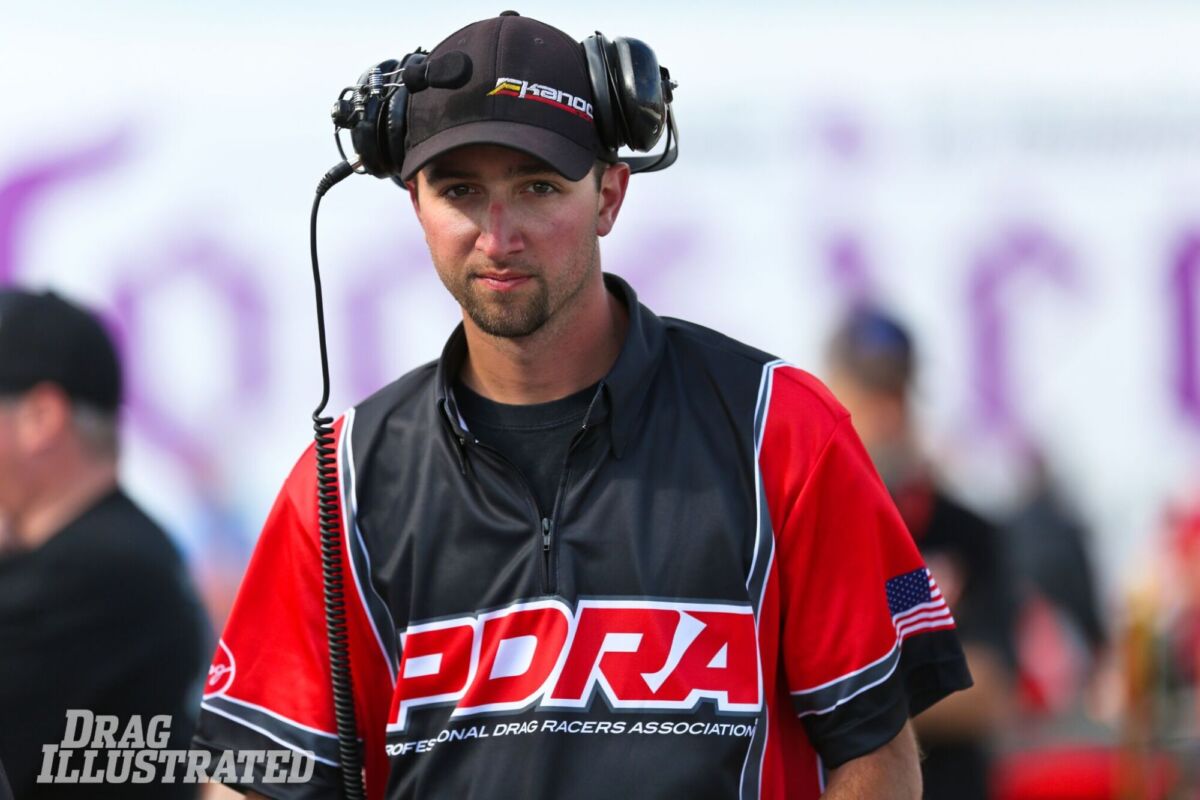
Harris stepped down from his official role at the end of the 2018 season. His successor, Tyler Crossnoe, spent the season getting to know the organization as the track prep specialist. Crossnoe has held the series director role since the start of the 2019 season. During that time, he’s also served as the VP of Virginia Motorsports Park, which the Franklin family acquired in October of 2017.
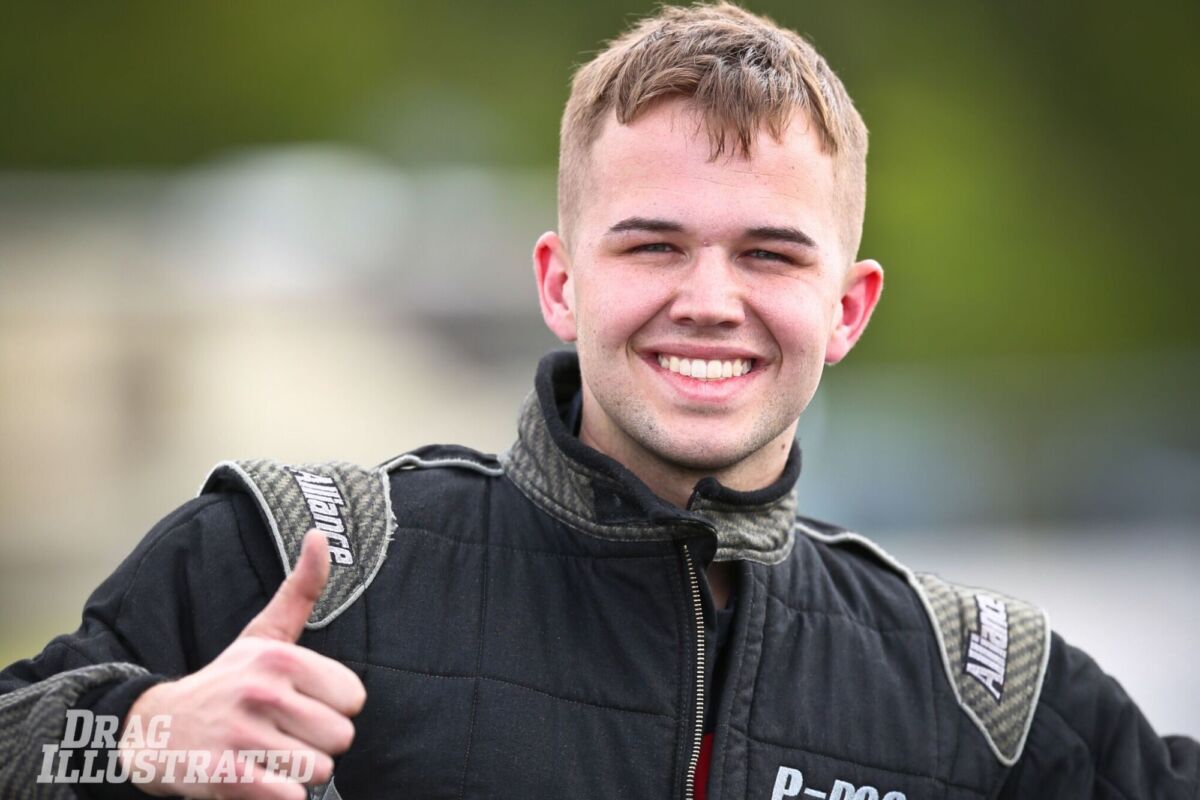
Since the beginning, the PDRA has prioritized the involvement of the Jr. Dragster classes in the series. Numerous Jr. Dragster drivers who competed in the earliest days of the series have since moved up to “big cars,” whether that means a Bracket Bash car or a 3.50-second Pro Boost car. Preston Tanner is a shining example of that. He won the 2015 Pro Jr. Dragster world championship, sharing the stage with his younger sister, Lexi, who won the Top Jr. Dragster title. The Indiana-based siblings are now race winners and championship contenders in their respective professional classes: Pro Boost for Preston and Pro 632 for Lexi.
THE BEGINNING
After the Performance Racing Industry (PRI) Show in early December 2013, a group of racers and car owners gathered in Memphis to discuss the possibility of starting a new eighth-mile drag racing series. Along with the Scruggs father-son duo and the Franklins, the original partners included car owner Roger Henson and Gene Hector, who also competed in Pro Extreme.
TOMMY FRANKLIN: Jason Scruggs was most instrumental. We felt like going into the season after PRI that there was not going to be a racing series for all of us to race at. We wanted to preserve that. I was a nitrous guy, where they were all blower guys. At that point, we had a Pro Extreme class and a Pro Nitrous class. That gave the ability for me to have a voice looking from a different perspective from them.
From my perspective, I wanted to preserve racing. We were enjoying the heads-up eighth-mile doorslammer racing. We had other small series we were running. We were running the EOPM at that point. We were doing some local stuff, but we enjoyed it at the level that it was being done traveling around. It was really just to preserve what was already started and didn’t want to see that go away because there was some great racing to be had.
BOB HARRIS: Jason Scruggs called me, and of course, we knew each other just from racing. About two or three years prior to that, I had sold Piedmont Dragway. Jason said, “Do you want to get involved with a new organization?” I said, “Jason, I don’t have the money to do what y’all gotta do.” He said, “No, I just want you to be in charge of it and maybe you can get somebody to help you.” Well, I asked Rick Moore because at that time he was doing my tech for my Big Dog stuff at Piedmont. That’s how that got started.
Jason [Scruggs] and Tommy [Franklin] and I had become good friends because we ran in the prior organization and we knew them from that and EOPM, which ran around here local. I said, “Well, Tommy Franklin would be a good one because he’s a good family man, and I think he has the financial means to probably do what you want to do.” At that time, we had no idea it was going to cost that much to do it.
So, he called Tommy and they wanted me to fly to Memphis the next two or three days and have a meeting. I got sick the day we were supposed to fly to Memphis and I passed out at Charlotte airport. I had a virus and I was dehydrated. So, Rick went on and talked with them and came back. I hired Bobbi Corey as a secretary. I think [Moore] stayed around until the first or second race and I think he had too much on his plate.
JASON SCRUGGS: The ADRL in its height was a pretty big deal for the Pro Mod community. A lot of cars were built, a lot of purpose-built cars, a lot of cars in general, and everybody got accustomed to a great place to race. The ADRL technically started in 2005 and it went through 2013. It had different ownerships and different people running it. Everybody can make arguments on whatever it was back in the day, but the point being it was fading away and it had its issues. We felt like we as racers want somewhere to race and we needed to step up and give everybody a place to race because there was so many cars that depended on good tracks and a good place to race that supported ADRL through the years.
I felt like we needed people that would make an investment financially to make sure that it stayed sound in the early growing years. I put myself and Roger Henson, who is still on my team now, together. Gene Hector got involved because he was talking about buying the ADRL at one time. I knew that he was interested in helping have a place to race and he was building a car at the time. Us three started and we started to involve Harris. He was instrumental in wanting to be a part of it. Bob Harris put a lot of sweat and tears into it. Bob and Jason Harris were kind of partners with Tommy in racing. That’s how Tommy came to the table. Us four had a meeting and all got together, and that’s how PDRA started.
We all had different ideas – whether we were going to sell tickets or give tickets away, where we were going to go, but we all worked good together. We just tried to get it off its feet. None of us wanted to make a dime out of it. If we had a great sponsor down the road and it became successful, we would give all the money back to the organization and try to be a better place, better purses, whatever, so be it. Truthfully, looking back on it, none of us really knew exactly how much money it all cost. None of us had ever been involved in a racing organization or a racetrack at the time other than Bob.
The inaugural PDRA season began in April of 2014 at Rockingham Dragway. The lineup included Pro Extreme, Pro Nitrous, Extreme Pro Stock, the new Pro Boost class, Pro Extreme Motorcycle, Top Sportsman, Top Dragster, Pro Jr. Dragster, and Top Jr. Dragster. That inaugural event played host to Frankie “The Mad Man” Taylor’s 3.485-second pass, which still stands as the quickest eighth-mile Pro Mod pass of all time. The eight-race season continued at South Georgia Motorsports Park, Memphis International Raceway, U.S. 131 Motorsports Park, Virginia Motorsports Park, and Osage Casino Tulsa Raceway Park before closing out the year with return stops at Rockingham and Virginia.
By all accounts, the first season was a success, laying the groundwork for an expanded 2015 season. Extreme Pro Stock, which already had fairly low car counts at most races, was cut from the 2015 lineup because of competition from the IHRA Pro Stock class that divided the group of racers. Pro Open Outlaw, a heads-up class for dragsters and altereds, was added to five races. The Outlaw 10.5 Championship series also added two PDRA events to its schedule. New sponsors joined the fold, and purses were increased across the board.
The 2015 season was better yet. After two full seasons of guaranteed payouts and completed events, the drag racing community started to gain confidence in the fledgling series. While Hector and Henson eventually divested their involvement in the ownership group, it was becoming apparent that Scruggs and Franklin were committed to the organization. Another eight-race schedule was set for the 2016 season, which also saw the return of Extreme Pro Stock on a five-race part-time schedule.
TRAGEDY STRIKES
Despite the momentum going into the season, the PDRA had a somber start to the 2016 season. Cold weather led to the postponement of the season opener at Tulsa, leading to a double header event during the Spring Nationals at Rockingham. On Saturday at the Spring Nationals, Top Sportsman veteran Ronnie Davis lost control of his ’63 Corvette and crossed over the right-side retaining wall past the scoreboards. After exiting the racing surface, Davis’ car clipped photographer Ian Tocher, who was the senior editor at Drag Illustrated at the time. Davis succumbed to his injuries, while Tocher was hospitalized with injuries to his legs, pelvis, and back. He ultimately had to have one of his legs amputated. The incident rocked the tightknit PDRA community.
TF: In all honesty, it makes you question it all. If we’re out here doing stuff that’s taking lives away from us, why do you want to do that? But we also understand that we don’t always get to write the story of life. Life kind of happens, and it’s usually written for us. For whatever reason, that was Ronnie’s day. He was a great competitor and great supporter of the PDRA. He was always there from the start with us.
It hurts to see that happen, but no different than it would hurt in anybody else’s life. I wish it never would’ve happened, but I also feel that our team did what was supposed to be done. It was just an unfortunate situation. But it does make you question “why do I go to the next race?” when you see something tragic like that happen. I’m sure Ronnie would’ve been somewhere else racing that day or I’m sure it would’ve been another series or whatever that is. Sometimes you want to make yourself responsible when you’re the one putting on the event.
JUDY FRANKLIN: Losing a racer in the series is like losing a family member. I can remember going to Renee Bingham [God Speed Ministry president and chaplain] and just saying, “I don’t want to do this anymore. I don’t want to be involved where people lose their lives.” But as Tommy said, we’re not the writers of this story. God is ultimately in control and He’s the one writing all of our story. Renee sat down and talked to me and said, “You know what? God has put you guys here for a reason. You guys are running this series for a reason to bring others closer to God.” She made me re-look at the way I was looking at things when that happened. Again, when you lose a racer like that, it’s like losing a part of your family. The PDRA is one huge family.
BH: That was a bad day. It’s really not hard to talk about now because truthfully, it was something that’s going to happen to somebody at some point. Unfortunately, it happened to Ronnie. Ronnie Davis’s two daughters were very, very, very good about it. There was never a lawsuit from them or any question that we did anything wrong. They were nothing but supportive of PDRA.
It’s tough thinking about Ronnie. I got a picture of his car in my office. He was a good friend of mine way before those days. Me and Jason were actually probably some of the first ones to him because Jason was coming up the return road. It’s something you probably won’t forget. But he was a good guy.
JS: That was a very difficult day for everybody. It doesn’t matter who it was, anytime you have a fatality, it’s extremely bad. Everybody I knew loved Ronnie Davis. He did a lot for PDRA. He did stuff for PDRA that people don’t even know he did. Back in the early days, he was instrumental in trying to get Drag Race Central to cover PDRA. He always supported PDRA with golf carts. Ronnie Davis was always a big supporter of PDRA. He was a wonderful person, which made it that much harder, but it doesn’t matter who it was. We’re all a big family. It was a terrible day. Then Ian, I was really close with Ian, a good friend through the years, and to see him get hurt so bad…the whole thing was just a terrible day, terrible accident.
That’s the thing about race cars. Anytime you get race cars involved, anything can happen. It’s not just for the driver. It can be photographers and journalists and crew members. These cars are dangerous. My dad got hit by something in a burnout and he’s very, very lucky it didn’t kill him. It hit him in the chest instead of the head. If it hit him in the head, it would’ve killed him.
It’s just a reminder of how dangerous this sport can be. We tried to tech the cars and we did a good job with that. Everything was good on that end, all of our safety aspects. From day one, Bob was always about safety and tech because he had run a racetrack and he had incidents before where people got hurt. He knew that stuff could happen like that. Of course, everybody knows, but sometimes you take it for granted.
THE TIMES ARE CHANGING
With heavy hearts, the PDRA carried on with the 2016 season, renaming Top Sportsman in memory of Davis, who was the reigning world champion at the time of his passing. During the drivers meeting at the third annual Memphis Drags, Harris addressed internet rumors that the series was folding up or scaling back for the 2017 season, noting that the series was on firm ground. He acknowledged possible competition from a rumored resurgence of the ADRL and confirmed that the Top Sportsman and Top Dragster classes would continue to be a part of the series lineup in 2017.
The 2016 season also saw the addition of GALOT Motorsports Park to the lineup. Formerly known as Dunn-Benson Dragstrip, GALOT was a sparkling new facility completely rebuilt by GALOT Motorsports owner Earl Wells. Already well-known in the tractor pulling world, GALOT Motorsports has fielded multiple entries in Pro Boost since the inaugural season. Fans packed the track for its first PDRA event in September, with highlights including a grudge race between Pro Extreme star Frankie Taylor and NHRA Top Alcohol Funny Car world champion Jonnie Lindberg.
As the series continued to grow, so too did the responsibilities for the ownership group, which was down to Franklin and Scruggs. While they largely remained hands-off from the day-to-day operations, their involvement outgrew their original expectations when they launched the series. At the same time, their motives were at times unfairly questioned due to their unique positions as racers and series owners.
JS: I race to take a load off. I race for two reasons: one, I’m competitive and I’ve always done it and I enjoy trying to make the car go faster, but at the same time, it’s something that I do with my family and something my dad and I have always done together. We do it to get away from work. It got to be almost like a second job for me. That’s the downfall. That’s the cons of it.
The pros of it is you feel like you’re doing something for the good of the sport and to help other racers have a neat place to race. People know they’re going to get paid. And it’s a good place for the sponsors. Starting out, the sponsors needed a place for these cars to run where they can sell product, whether it be Hoosier Tire or Jerry Bickel Race Cars or RJ Race Cars or shock people. They all needed an organization for cars to go race so they can sell product. We were just trying to fill a void. So the pros on my side of it would be trying to help the industry, an industry that I love. I’ve always loved racing. If I can do something good and help out the organization, help out the industry, I felt like I was doing that in the early going.
But like I said, the cons of it would just be it becomes more of a business. You can’t ever please everybody. It’s always something. Somebody griping about something and all you’re trying to do is a good thing. And you spend a lot of money. You get a lot of complaints about this or that all the time. And don’t get me wrong, I wanted to hear complaints when I was part of the organization. I want constructive criticism. But over time, that part of it takes the fun away from racing. If that was my business it would be one thing, but I’m trying to race to get away from work and to have a good time. That’s the bad part, but it had a lot of good parts also. I wouldn’t take anything for what we did. I’m proud of it.
TF: The pro [to owning and racing in the series] is, hey, we know that there’s going to be a series. We know what we have. We know what the plans are to continue. It’s the thing that a lot of people have in the back of their mind – is there going to be a series? Is there going to be this or that? Well, when we’re driving the ship, per se, that makes it nice because we know there’s a direction. That’s one of the hardest things to communicate to everyone – we’re solid here. We’re growing. We’re going to continue becoming the PDRA that we all want to be. That’s probably the biggest pro to it.
The cons, bluntly, are the people that just don’t know, that want to make up the stories that aren’t true. I will take a hit before I’ll ever take a handout. To do this and be competitive and be able to win, it’s hard already because these teams are great out here. But for me to be able to do it and have somebody accuse that I have an upper hand in any way, shape, or form, that’s hard. It’s easy for me to lay down at night and go to sleep knowing that I’ve done everything the right way, but that doesn’t keep the chatter from happening. I’m ultimately a competitor and if I turn on a win light or I win a championship, I want to know that I earned that. If there’s any way, shape, or form that I felt like I got that without earning it, then it wouldn’t go into my life as a win.
It’s the same thing with my kids racing in the series. Everybody wants to think that you’re taking advantage of situations, but that’s so far from the truth. I will make my kids take a back seat to a free win light before I’ll ever let them have a free win light. I want to be a racer just like everyone else. When I turn on a win light, I want everybody to know that I earned that win light. It’s harder for your kids because people are cruel at times, and you want them to know that they earned it as well. We’re pretty rough on our kids. They earn their way. I feel like that’s the right thing to do and the right way to do it. I probably shouldn’t care what anybody else thinks, but when this thing is done and over with or we’re not competing as racers anymore, I want our legacy to be exactly that: a legacy. Knowing that what we did, we did. I don’t want an asterisk next to our name.
PDRA went into the 2017 season full of momentum. Outlaw 632, a class that was birthed in Florida, was added to four events after a promising trial event at the Bradenton race. Extreme Pro Stock became a full-time class, a status that hasn’t changed. With increasing demand in Top Sportsman, which saw as many as 88 entries attempt to qualify for the 16-car field in 2016, the series created an “Elite 16” field for the 16 quickest Top Sportsman cars. The remaining cars would fall into the regular Top Sportsman field of 32 or 48 cars depending on car count. That pilot program proved successful, and the same program was adopted for Top Dragster for 2018.
With increasing car counts and sponsor support, the series announced increased payouts of $10,000 to win in Pro Extreme, Pro Nitrous, and Pro Boost for the 2018 season. Liberty’s Gears also signed on as the title sponsor of Extreme Pro Stock, a role the company has continued ever since. Increased payouts for the Top Sportsman 32 and Top Dragster 32 classes were also announced. Outlaw 10.5 was added to four races, and turbocharged entries were allowed in Pro Extreme Motorcycle for the first [and last] time.
Despite the $10,000 payout, Pro Extreme was struggling to attract the cars needed to run even an eight-car ladder. Even Scruggs, perhaps the one racer most associate with Pro Extreme, parked his car late in the 2017 season to focus on family and business. In May of 2018, PDRA reaffirmed its commitment to the class, but when just a few cars showed up for the Summer Drags in Martin, Michigan, the writing was on the wall. The class was cut for the rest of the season, effectively ending a run that started in 2005.
JS: That was pretty hard, I’m not gonna lie about it. That’s one reason why I was losing interest too because it’s not fun when you don’t have a lot of competition. When the cars started dying off and we were struggling to get full fields, it was pretty tough. But at the same time, the cars got so fast. I’m not going to say I wasn’t somewhat instrumental in that, but the cars got so fast, and I’m not going to say expensive because they’re all so expensive – I mean, it doesn’t cost that much more to run Pro Extreme than it does anything else – but the cars got so fast and I guess people thought it cost more, I don’t know.
Originally, I’m the one that started the Pro Boost class, and that class was growing and people were building cars for that when we might’ve been better not to have that and Pro Extreme might’ve made it. But all that’s hindsight 20/20, and now Pro Boost is a great class and it is what it is. They have two great classes as far as Pro Modified cars go in PDRA.
At the end of 2018, in the weeks following the PRI Show, Bob Harris announced his resignation as the series director. His son, Jason, just won his second Pro Nitrous world championship.
BH: I was to the point where I was getting older and I wanted to be with my grandkids and Jason. I didn’t want to watch him win by looking out the tower window. I wanted to be on the grounds.
THE NEW KID ON THE BLOCK
Enter Tyler Crossnoe. The young Tennessean worked with the PDRA team in 2018 handling track prep, and when he was presented with the opportunity to move to Virginia to take on full-time roles as the PDRA series director while also overseeing VMP, he jumped on it. He had track operator experience from working at Memphis International Raceway, as well as promoter experience through his yearly Outlaw Street Car Reunion races.
TYLER CROSSNOE: Tommy asked me to step in for an interim role until we could find somebody that fit the spot pretty well. The interim role is still going five years later. We’ve kind of made it our own and turned out to be a good deal – kind of a blessing in disguise for me. I say all the time it’s a lot of work to do both of them, but at the same time it’s also good to have both under the same banner.
TF: Tyler is a unique individual in the fact that he has a passion for the sport as well. His vision, his passion. He likes to work. He’s done great with it. One of Tyler’s biggest faults is Tyler himself – just trying to slow him down and try to keep him from burning himself out, beating himself up. The internet is a brutal thing at times. I’ll be honest, there’s a lot of times he’ll make a move and I question it on, “Whew, was it too soon for that?” But then it comes true for him. That could be an adjustment for weather or just anything that you move. He’s better at planning ahead, looking ahead, and saying, “OK, we need to make this adjustment.” I tease him and say that he’s lucky at times that things fall in his favor, but in all reality he sees that and tries to get ahead of it and makes sure those things fall into place.
He’s a great ambassador of this sport that still has a lot of years to contribute and is well ahead of himself from an age perspective. That’s probably one of the biggest things that he hates is that everyone puts an age on him still. I keep warning him and telling him one day he’s going to wake up and be the old, experienced man and life is looked at as a different perspective because no more will he be the young kid.
But he’s great for this sport. He’s great for the PDRA. He does a lot of good things and always has the mindset of how to make it better. I’ll be honest, I try to give him as many tools as he can have, but for anybody to think that we’re a rich organization over here with unlimited funds to make it happen, that’s so far from the truth. Everything that we do, we have to do methodically and within a budget to try to take the money that we have and make it work.
Though the 2019 season had a few hiccups due to weather – including an outright cancellation due to a hurricane – Crossnoe quickly adjusted to his new role as series director. It took some time, but the racers also adjusted to Crossnoe’s new ideas and policies.
TC: First season was always a first season. The fear of the unknown going in. At that point, I was 27 years old. A lot of people look at that and go, “Dang, that’s a 27-year-old kid. I’m in business for myself. Why do I need to listen to him?” Once we got the respect factor on both sides – me respecting the racers and the racers respecting me – and having that trust in making the right decisions, putting them on a safe racetrack, putting the right staff into place, and safe and efficient events were run, it was all good. It was a learning curve year for sure.
But at the same time, I felt like 2019 was the year that really, I’m not going to say turned the tides, but it started the, “Hey, we’re going to change the direction of PDRA. This is how we foresee it going in the future,” so we had to turn the boat a little bit through that entire year. That was difficult because you have people that had raced the series for years that were, “Ahh man, you can’t change.” But it was things that you had to change if you wanted to grow and get better. There was a lot of pushback, for sure, but at the same time, with change comes good things, and with change comes bad things. We learned from all of those, and at the same time, I feel like 2019 was a solid year to get the boat turning in the direction we were hoping to take it.
ADAPT AND OVERCOME
Lurking around the corner was the COVID-19 pandemic, which began less than a month before the 2020 season was supposed to kick off. The season opener at GALOT was postponed by about two months to the last weekend in May. The schedule was reduced to seven races, while six races were actually completed. Fans were not permitted at the first race due to social distancing guidelines, while limited fans were allowed to attend the second race at Darlington Dragway.
TC: Yeah, ’20 was a hard one. You go into the whole season with the mindset that we’re coming off a strong 2019, we’re growing, we’re getting better, and everything is looking really positive. Then all of a sudden you look up and go, “Oh crap. This is not good.” Fighting a global pandemic, not only on the human side, but also the business side with the hurdles we had to jump through was tough. The racetracks that were partnered with us on all those events, the hurdles that they had to jump through. That was a year where a lot of respect was earned on both sides.
We made the conscious decision to try and go after getting on the racetrack as quick as we could. To do so meant we raced with no fans. Also, no fans meant that we made the decisions to have to cut purses just to get on the racetrack. We were all really nervous about that going in, like, “Oh man. Are we about to run off the people that we have?” But everybody bought in. Starting the season at GALOT, we had to cap certain classes. Sold out everything that was on a cap. Racer turnout was absolutely huge for that first race.
That year was a trying year from a planning standpoint because you really became fearful of planning because your plans changed so often. It was really one of those years that shaped what PDRA is now because of battling through COVID, backing up on the purses, and just taking a step back. The next season we introduced the ProStars program that’s a free entry fee, big-money payouts shootout during Night of Fire at Virginia. That kind of turned the tide of the series. A lot of people now look forward to ProStars, and that’s one of their goals for the year, to make it into that race.
Before 2020, everything was going smooth, so it was like why rock the boat? But when 2020 happened, it’s like, “Here’s our excuse. If there’s something we ever want to try or redo or change, this is our opportunity because everybody else is fighting the same fights, and if we want to change something, this is the time to do it.” It was a questionable move at the time, but now looking back on it, ’20 was probably one of the strongest turning-point years for the PDRA that I can remember.
The inaugural Summit Racing Equipment PDRA ProStars race during VMP’s Night of Fire was just one of the shiny new features on the 2021 schedule. Others included first-time stops at NHRA national-event facilities Summit Motorsports Park in Norwalk, Ohio, and Maple Grove Raceway in Mohnton, Pennsylvania. Both tracks were on the 2020 schedule before the pandemic. Kentucky’s historic Beech Bend Raceway Park in Bowling Green also joined the tour.
One of the themes of the 2021 season was rain. The wet stuff plagued nearly every race that season, leading to early qualifying sessions, reduced qualifying opportunities, and Sunday eliminations. Even during the driest years, it seems rain is a factor at no less than a couple races per season. It’s comical at times, leading to jokes that the PDRA actually stands for “Professional Drought Relief Association” or “People Dragging Rain Around.” No matter the challenge, though, Crossnoe and the PDRA team jump into action. It’s not unusual to find them working through the night to rebuild the track surface after a heavy downpour puts a stop to the day’s on-track activities.
TC: It teaches you to keep your head up through adversity. It’s another one of those feathers in the cap that racers trust us to get these events done and to make the moves on the schedule when we have rain coming in to get ahead. Anything we can do to make sure we complete the event on time and try to get them home and back to their regular jobs and their families. As hard as it is on us and frustrating as it is to make the changes, going through as many fights as we have has taught us a lot as a team. It’s taught us a lot as a series.
It’s also, in my opinion, built the trust level even more between the series and the racers. They might see rain in the forecast, but they’ll say, “Hey, we’re going to load up and go because we know they’re going to get this thing in no matter what. They’re going to fight. They’re not going to give up until there’s absolutely no chance to get it in.”
The 2021 season also saw the introduction of Pro Street as a world championship category. Created as a revival of the true Outlaw 10.5-style racing, it features cars with stock body styles and dimensions running on 33×10.5 bias-ply slicks. With smaller 28×10.5 slicks, Super Street was added in 2022 on a trial basis before becoming a championship class for 2023.
TC: Pro Street is really kind of taking hold. It came from a very strong base in Outlaw 10.5. A lot of racers that were still involved with that program that had moved on to other classes swapped back to 33×10.5 trim to be able to run Pro Street. The class is really taking off. Strong car counts, almost having 16 cars at every race now.
It’s really an exciting class because it gives a different look to the series. Same as Super Street. A Ford Mustang looks like a Ford Mustang. A Chevrolet Camaro looks like a Chevrolet Camaro. That’s different from what we see in Pro Nitrous and Pro Boost. The Pro Mod bodies are stretched with added wheelbase to be able to run the Hemi platforms and the big nitrous platforms. The relatability factor of Pro Street and Super Street is what I feel like makes them unique in the PDRA. They don’t look like any other cars that are there. You look at Top Sportsman and a lot of those cars could be a 632 car or a Pro Stock car or a Pro Nitrous/Pro Boost car. Pro Street and Super Street are their own thing. I think that’s what makes them unique and special. I also think that’s what’s growing both classes in the series as we close out 2023.
SMALL CARS, BIG COMPETITION
Growth was apparent throughout the 2022 season, as car counts were huge at the marquee races on the schedule, which was unchanged from 2021. Former Jr. Dragster standouts stole the show multiple times, with longtime best friends Amber Franklin and Lexi Tanner trading wins back and forth in multiple final rounds. Preston Tanner also scored his first win in the stacked Pro Boost division. It was a full-circle season for the parents who committed to traveling the PDRA tour with their children in the early days, as well as for the young racers who made their dreams of racing in the “big leagues” come true.
PRESTON TANNER: It’s an odd feeling sometimes because you think about when you were in a Jr. and you just wanted to win your class. You’re looking at these guys racing Pro Extreme or Pro Nitrous back then thinking, “Man, I would die to be in that position one day,” and now that you’re in it, you just can’t believe it sometimes because I am that guy that I used to look up to. It’s just a weird feeling that I don’t think I’ll ever get over.
The Jr. Dragster classes have become two of the most competitive areas in the series, with Pro Jr. Dragster drivers qualifying on a 7.90 index and Top Jr. Dragster drivers qualifying based on reaction times. In 2023, 91 Pro Jr. Dragster drivers competed with the series, along with 49 Top Jr. Dragster kids. The huge Pro Jr. Dragster fields led the series to expand the class to a 32-car qualified field starting at the third race of the season. One race later, four drivers ran 7.900 in qualifying, while another 12 ran in the 7.90s. The bump spot for the 32-car field was 7.924. Four drivers ran 7.925 and two ran 7.926 to DNQ. As frustrating as it may be to miss the field, parents, racers, and even those looking in from the outside realize the experience prepares kids for bigger challenges down the road.
PT: I can say I’m glad I’m not in it anymore because it used to be stressful when three guys used to be 7.90, then the rest of us were trying to get in. Now, I just think it shows the family atmosphere too, though. I believe that there’s other series where the Jr. Dragster kids don’t feel welcome. Here, they probably feel the most welcome anywhere with a series that has professional categories. I think that’s why PDRA gets that many Jrs. They treat them fairly. That and the family atmosphere. Just like here in the pro pits, if you go down there and somebody needs a part, I’m sure anybody there would be willing to help anybody.
You have to think, some of these kids probably have more laps than some of these adults going down the track because they can hit 10-15 runs in a weekend compared to what we do now, which is six or seven. They get a lot more seat time and laps down the track. I know the speed’s a lot different, but if you can do the repetitions – pre-stage it, stage it, just be used to the track and running somebody else – you have an advantage. That’s why you see a lot of these kids hop out of Jr. Dragsters and they instantly do pretty well in whichever class they step up into. It’s the amount of laps they have.
JF: The Jr. group is a special group at the PDRA. Our Jr. drag racers are complete badasses. Excuse the language, but they are. You go out there and look at the Top Jrs. that are cutting the tree down just to get in the field, then the Pro Jrs., just trying to run that 7.90 index, it takes a lot of skill and effort. Not only from the kids themselves, but from the parents. I just think the Jr. Dragster group in PDRA is a special group.
TF: There’s a lot that would say, “We don’t have room for Jrs., we don’t need Jrs., this is entertainment.” As we alluded to in the beginning of this conversation, everything that we do is to try to preserve a sport that I grew up enjoying and loving. We’ve got to see this come full circle. Parents have invested into their kids to come out and race a Jr. Dragster at a high level, because I do agree that the PDRA Jrs. are at another level. But we’re watching those kids now grow up and get into big cars. It doesn’t matter if that’s Top Sportsman, Top Dragster, Pro 632, Pro Stock, Pro Boost – we’ve watched all of that happen. That’s when it’s full circle for you.
What we said we set out to do in the beginning, we couldn’t write that script. We knew what we wanted, but PDRA has created itself as something so special that people stay in it and do it. We all know it’s not because it’s cheap. They’re spending a lot of good money to buy race cars and keep their kids racing. And these kids are finding their own money to keep racing. We watch that happen. To me, that’s what it’s all about. Preserving the sport and making the racers of tomorrow.
JF: It’s not something where you go hand everybody a trophy. Everybody has to qualify and they have to earn their spot. We’re making better drag racers out of them. We’re making better people.
TF: We keep rules on them to where it’s not a playground as much. We want them to race on a professional level. They have rules and guidelines that they have to stay within. Unfortunately, our life is all about that. We all have to stay between the lines on the road. They get to race at a high level and act like professionals and they are professionals.
BH: It’s been very exciting watching those original Jr. Dragster racers move up into big cars. The Tanners are a good example. Then you look at Brayden Davis, and I can name more. It’s unbelievable. Like right now, Travis Harvey’s son is running and I’m sure he’ll jump in a big car at some point. My grandkids have Jr. Dragsters, but I think they’re race burnt out. They’ve been racing since the day they were born. Every Jr. Dragster kid is not going to get into a big car, but if they do, it makes them a better driver, a better person, and it makes them understand safety and communication with all the people. I think that’s important.
HITTING THE 10-YEAR MILESTONE
In 2023, the PDRA celebrated its 10th season of competition. Over the course of eight points-earning events and the ProStars race, more than 600 racers earned points towards a world championship in the seven heads-up categories, four sportsman classes, and two Jr. Dragster groups. That’s not including the hundreds of local bracket racers who competed in Bracket Bash.
The series has grown into something the original partners couldn’t have predicted 10 years ago.
BH: I’m most proud of the competition. It’s the most competitive. I’m not saying that because we’re running in PDRA. I’m 70 years old. I’ve been racing 45 years. I’ve been in IHRA, NHRA, ADRL, EOPM, Big Dog, and now PDRA. I’ve named them all. There’s nothing more competitive than PDRA racing because of the quality cars, quality people, and the quality of the people running the organization. I’m not running it anymore so I’m not talking about myself.
The Franklin family, I want to say something about them because truthfully, with the kind of financial situation that happened after they took it over by themselves, most people would’ve went by the wayside and just culled the whole deal. Nobody knows except the people inside what it really costs and what they lost for years to get it back to where it’s breaking even or making money. Most people aren’t willing to last that long, but they are, and it looks like they’re here for a long time. I’m very proud of that.
I think Tyler’s took over and done a good job. Overall, it’s been good. If you haven’t run PDRA, you need to. You’re not going to get rich doing it, but I promise you you’ll have a good time.
JS: I do still keep up with it. I have a lot of friends that race there, and I keep up with all drag racing, especially Pro Modified drag racing since I love it. That being said, I’m just proud. Proud I could help get it started. I’m proud of what Tommy and his family have been able to do. It’s a lot more to it than people realize. People that don’t really think about it take it for granted what Tommy does. I think Tommy would be the first to tell you he doesn’t want a pat on the back, but for him and his family, the sacrifice they’ve made to keep it going the last few years and being involved for 10 years and give all these racers a place to race…like I said, I don’t think he wants a pat on the back, but I think he’s proud of it and I’m proud of him and proud of what it is too. Proud of what we started back in the day. I think it’s going to be good for the future. It’s a good place to race.
From day one, I don’t think anybody in their right mind would say that PDRA has not had the toughest competition or at least right up there with anybody in the world. They’ve always had the best cars, the fastest cars, and if you go to a PDRA event, you better have your A game if you’re going to win because it’s tough. The caliber of cars and competition at those races – that’s something else that PDRA can always be proud of in 10 years.
TF: We didn’t create cars. What we did was give them a great place to race. We treated them equally. We gave them the exposure they deserve. We didn’t invent Top Sportsman or Top Dragster. That was a class that already existed. It was just a class that there was a lot of participation in. There’s always somebody that feels neglected at some level, but our goal is to try to give everybody the same thing and the same respect. They answer it back by showing up at the entry gate on Wednesday to come in and race. We love that.
The interesting piece that we’ve created here at the PDRA is hands down the best competition in I feel like every single class. Sometimes winners breed winners. I think that’s what happens here. People come in and they want to be as good as that next guy, and everybody keeps stepping up their game. It’s unreal. It really is. I can sit back and proudly say no matter where I go, no matter what I do, that we have the best racers in the country. But they prove that. All we did was give them a platform to do it.
We definitely knew that there was a need for a great place for everybody to race. Can I say that we wrote the script? No, absolutely not. We knew what we wanted. We wanted everybody to want to come race with this organization. We just tried to lay out the things that we knew would do that. Is it the cheapest place to race? No. Is it the easiest place to race? No. That wasn’t ever really what our mindset was. We wanted somebody that was willing to come in, spend the money to have good racetracks, consistency, organization, and respect. And that’s what we ask for back. Most of our racers do exactly that. Could I see it in the place that it is now? I mean, I dream big. I know that’s what we wanted, just didn’t know what it was going to take to get there. Are we where we want to be? No. Do I still have bigger dreams? Yeah.
JF: I love the PDRA. I love our PDRA family. We enjoy spending time with our PDRA family as much as we do most anyone. The winter months are hard when we’re not around our PDRA family. That’s why a few years ago we started doing the PDRA trips just so we could get together with our PDRA family on the offseason to enjoy time together. The same as Tommy, I would love to see it grow. I would love to see us put a packed house every time the PDRA rolls into town. I would love to see us completely pack the house with racers and spectators and everybody know that the PDRA is the baddest place to race.
As 2023 winds down, the PDRA is forging ahead into the next 10 years. With a strong racer base established, the series plans to focus on building its spectator base while continuing to sweeten the pot for racers who compete in the series.
TC: It’s really easy to get lost in trying to build a show and making something a circus, but when you can put on an awesome event for racers that want to continue to come at each and every event, you end up with a great show. The next step is finding more fans to put that show in front of. We’ve been putting more emphasis on the social media side, the advertising side, the fan engagement side, and at some point the home run ball is going to drop. You can go out and hit the singles and the doubles so many times. At some point, the big swing is going to happen. As long as we stick with the program and continue to get better each and every event, it’ll happen. We look forward to that day, that’s for sure.
The more that fans come out and see it and spread the word of what PDRA is and how the series does, I think the sky’s the limit for what the series can do going forward into not only the 11th season, but every year past that, as far as we want to go.
The PDRA started as a stable and trustworthy place for racers to compete. Through highs and lows, the series has continued to live up to that original mission. The Franklin family and the team they built remain committed to offering that for 2024 and beyond. As always, Tommy Franklin is quick to share the credit with the people who’ve made the first 10 years of the PDRA possible.
TF: Just a personal thank you from Judy and I to everyone who’s ever been involved in working with the PDRA, past and present. We talk about us and we talk about the main people that contribute, but the truth is it takes them all. It doesn’t matter if it’s from the registration process or coming through the burnout box to the starting line to the safety guys and the media – everybody that puts it on. We purposely stay out of the event as it goes on, but it takes all of those people.
A personal thank you to every racer that competes with us, because again, without them, we would not be the series that we are.
Thank you to everyone on the media side of it because they’re our exposure. I feel like our media family is different than other organizations as well. We have a really big, tight media group that seems to work together to put us on display out there. We really appreciate all of that.
Lastly, obviously, the sponsors that make contributions to PDRA. That’s what really sets the purses and sets everything in place for us to put this on.
I’ve said it for numerous years: all we do here is provide a platform for companies to strive, for racers to strive, and to try to entertain a family that wants to come out and watch racing. It takes everybody to make it happen.
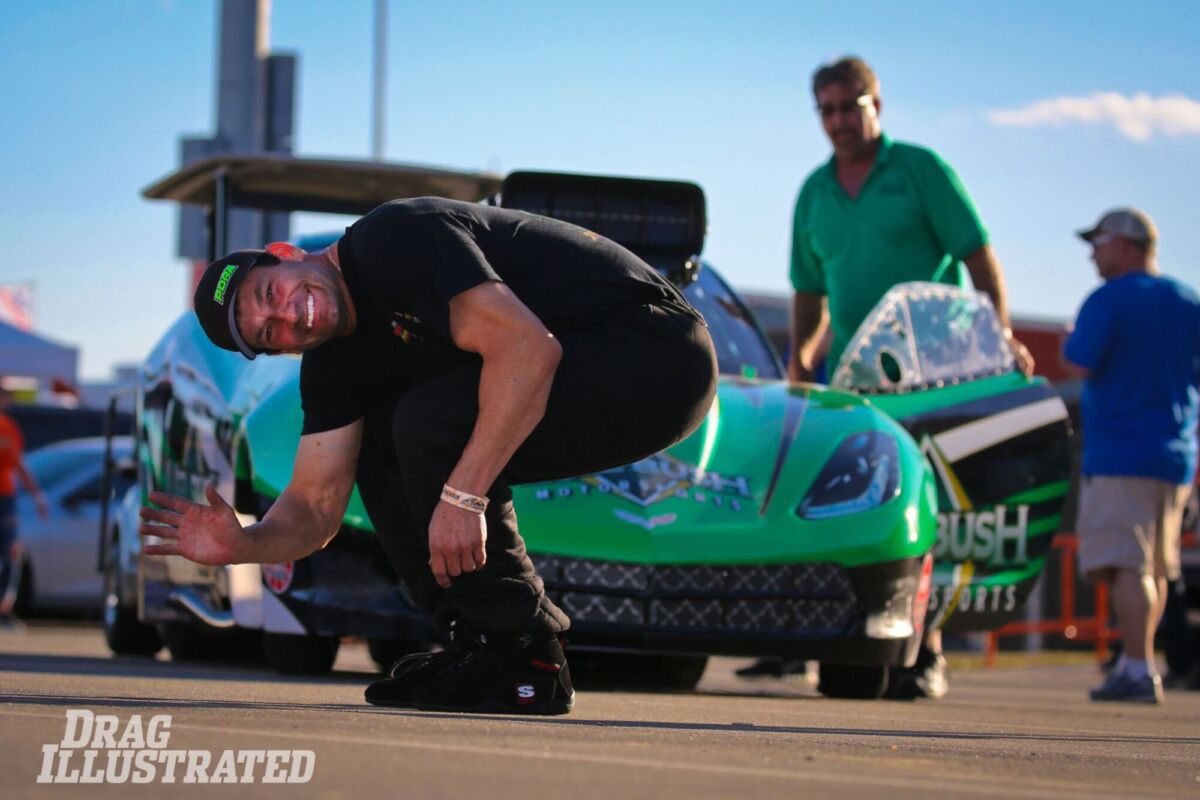

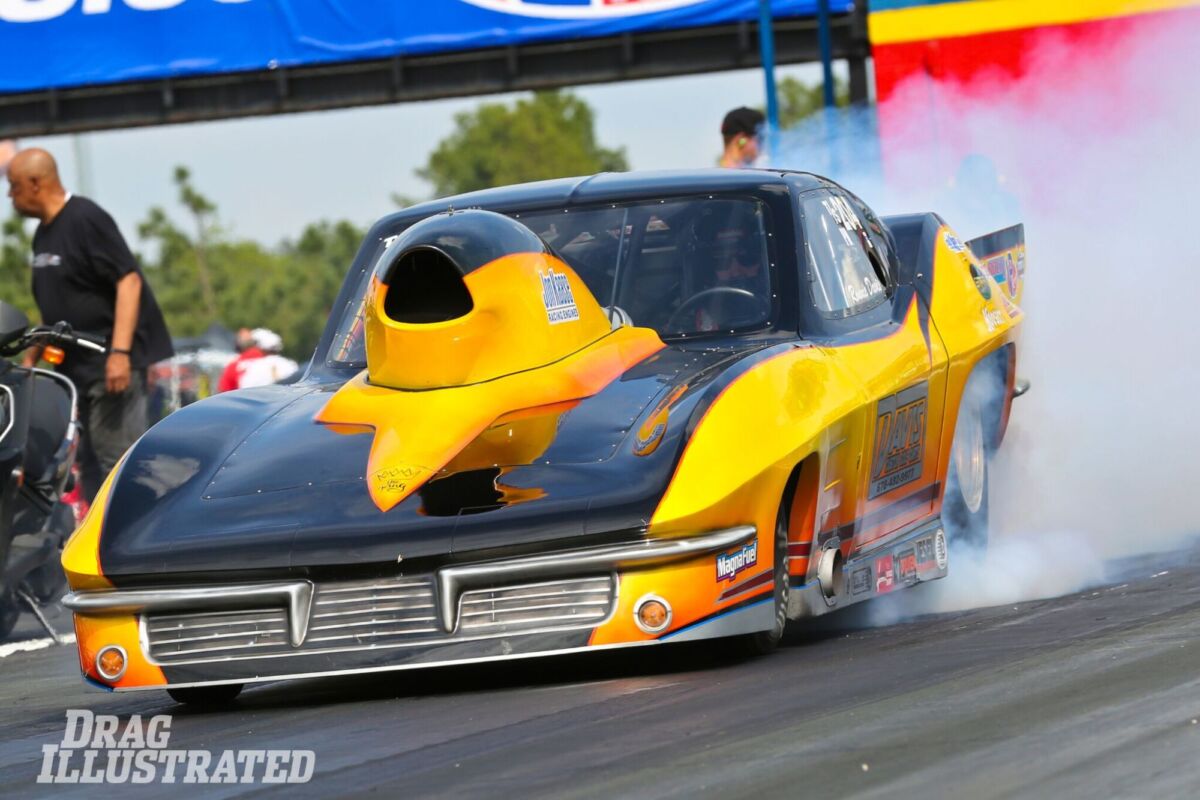
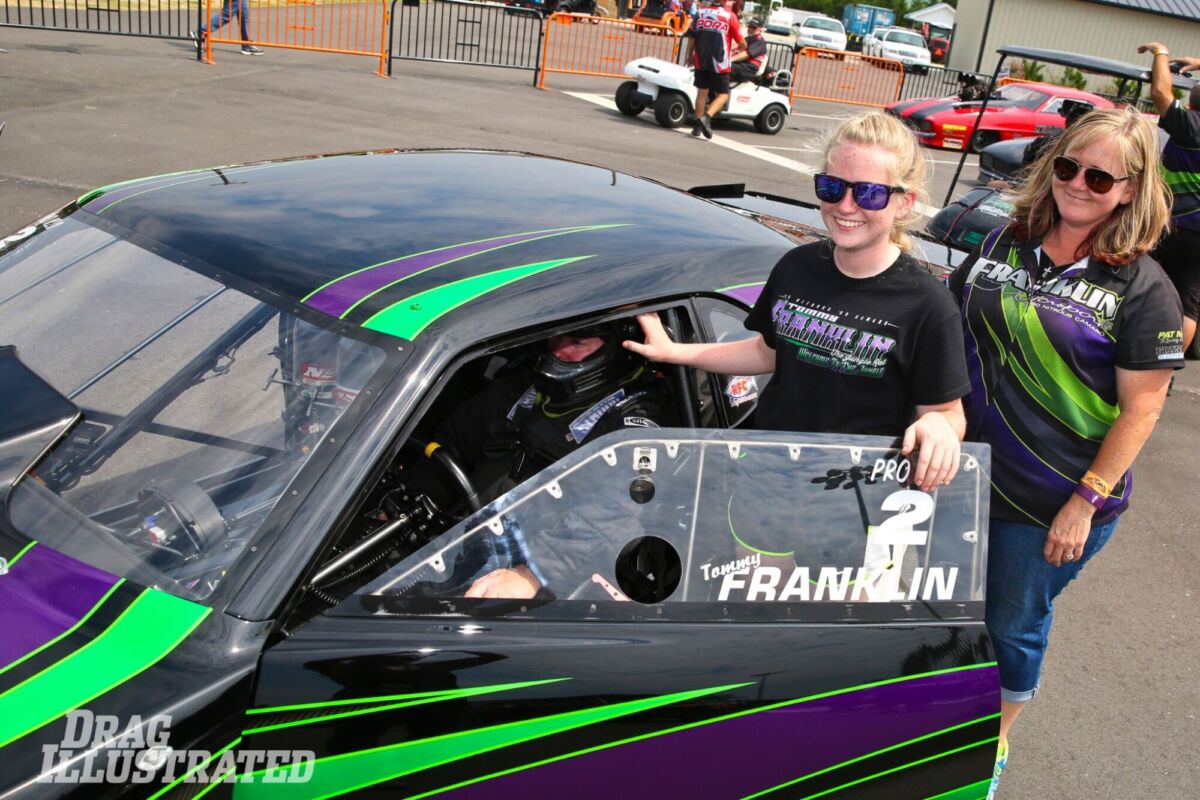

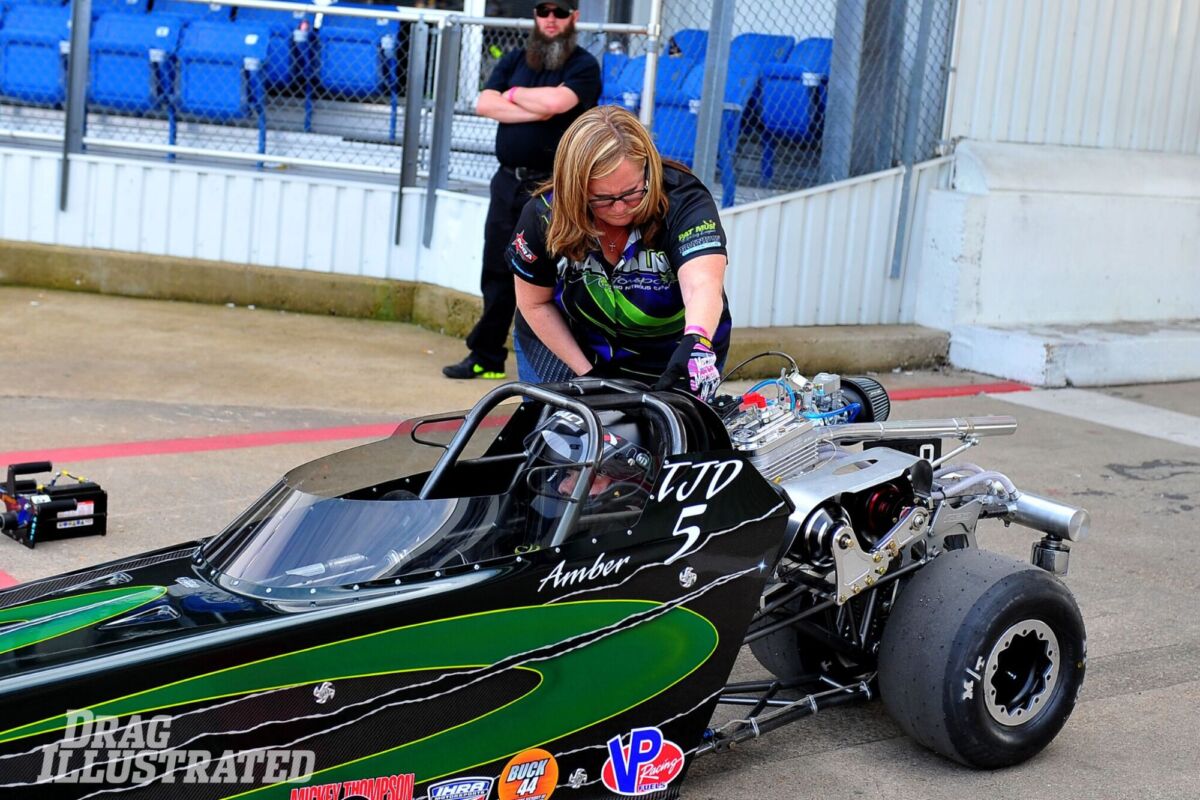
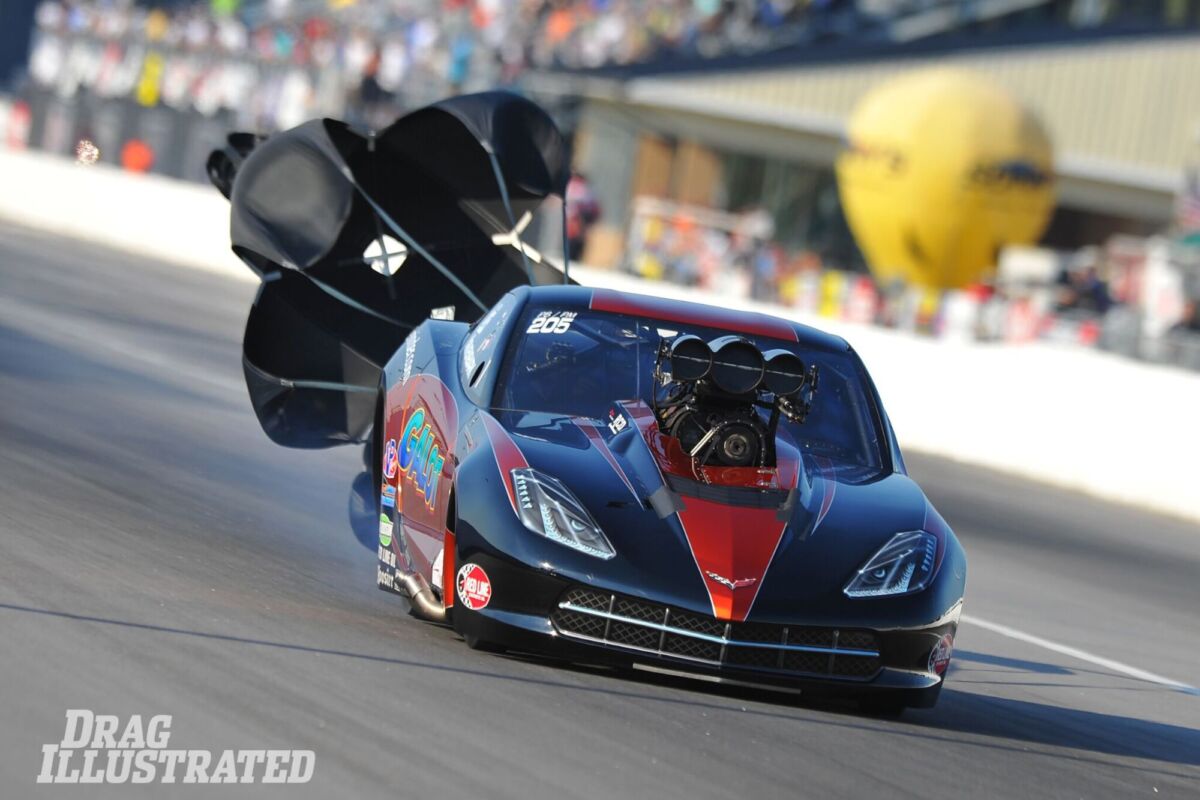
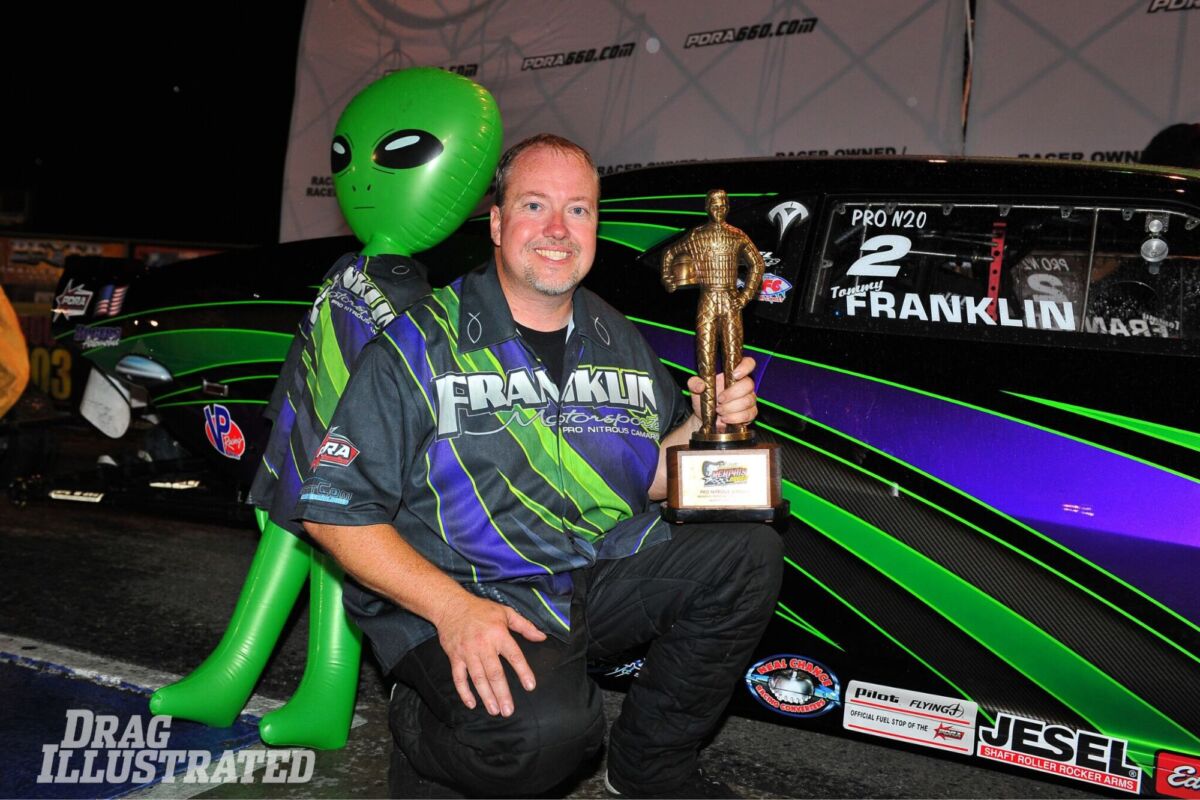

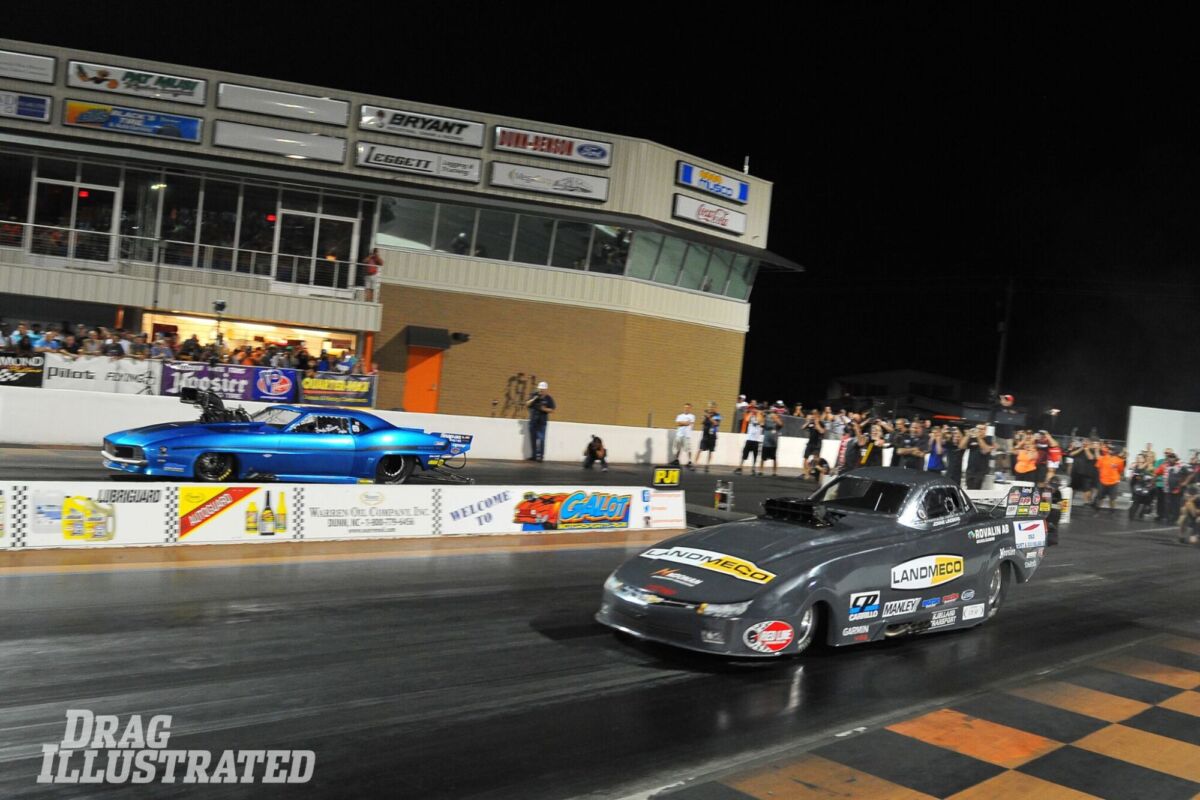

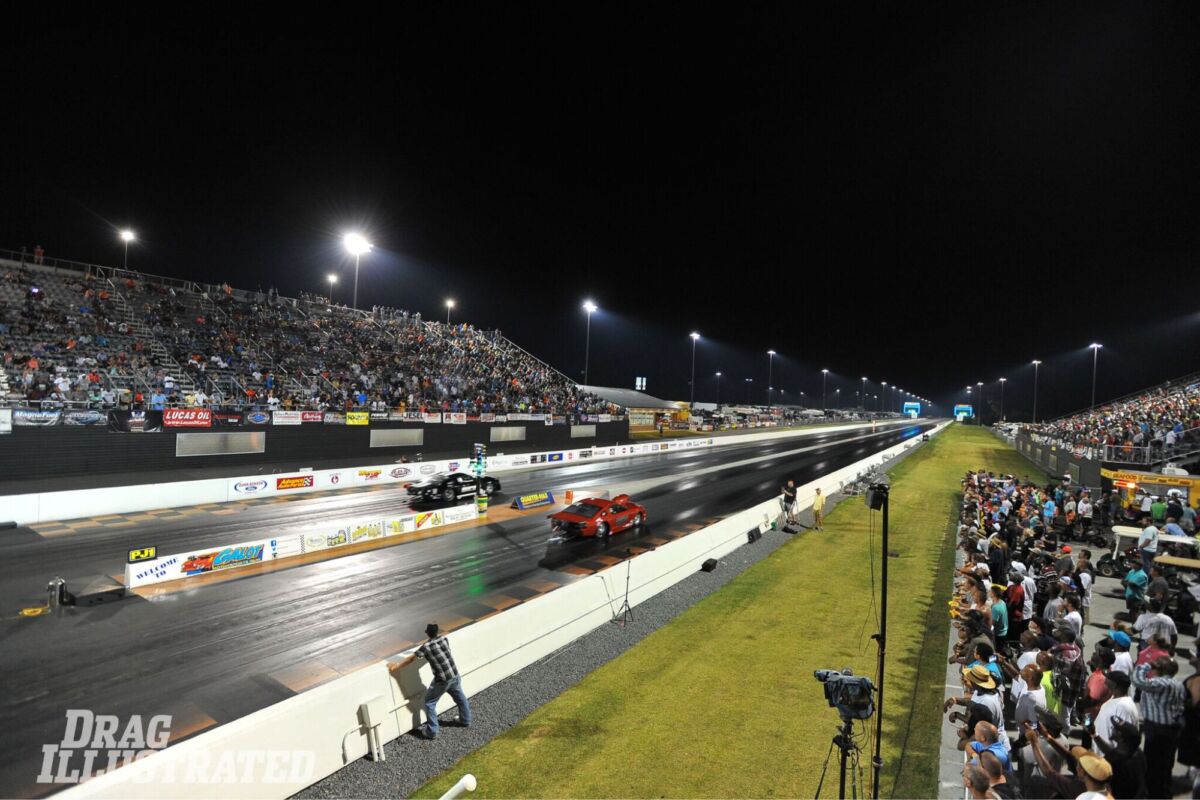


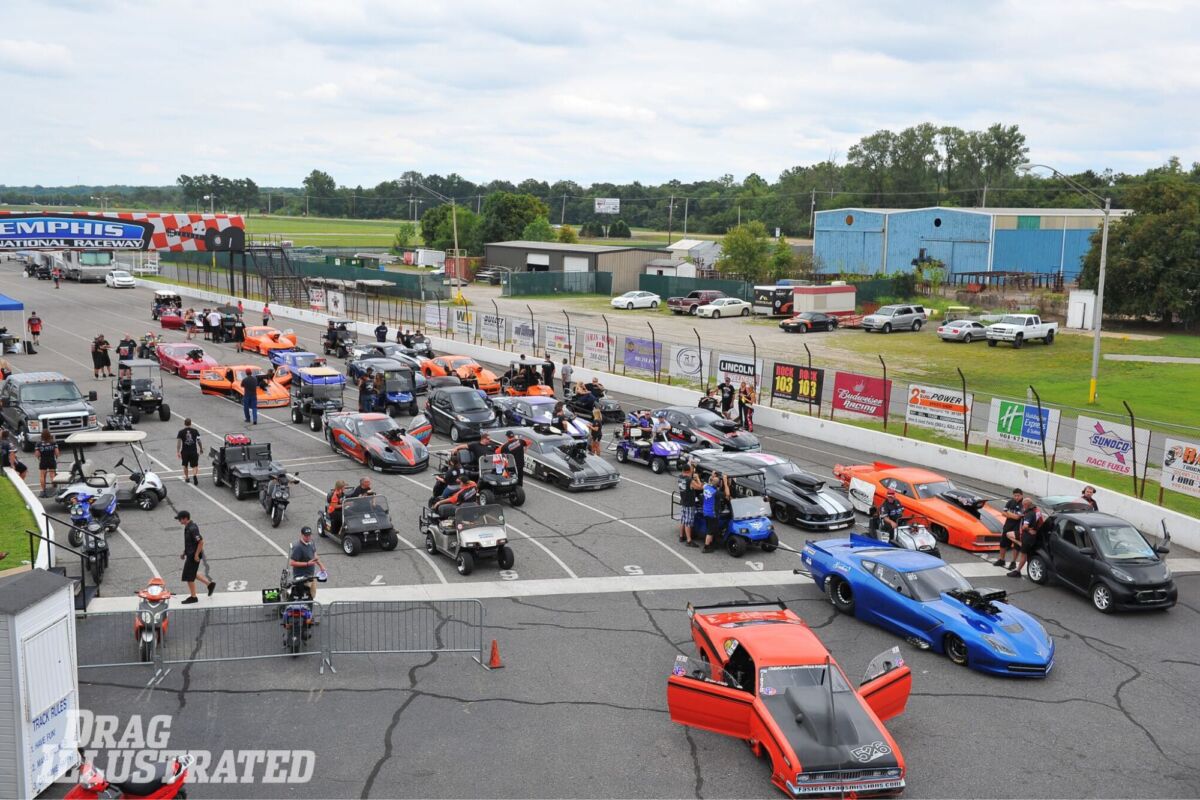
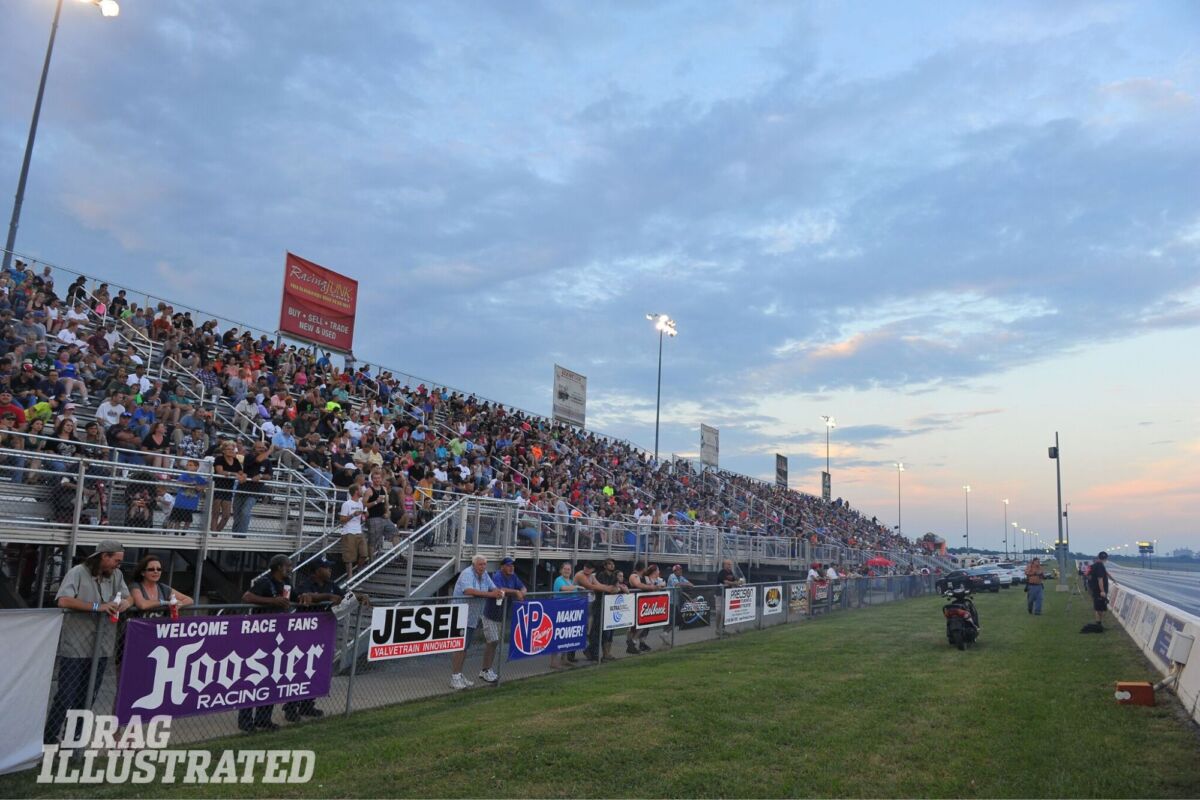
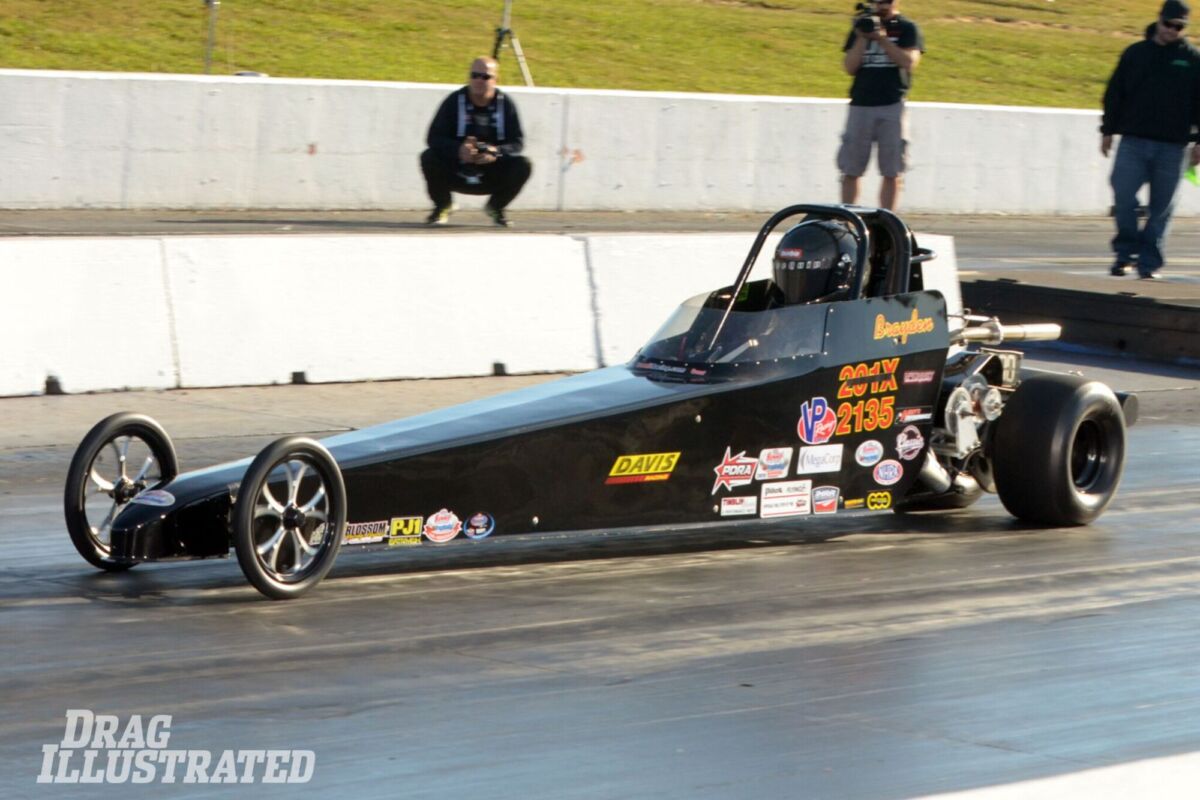
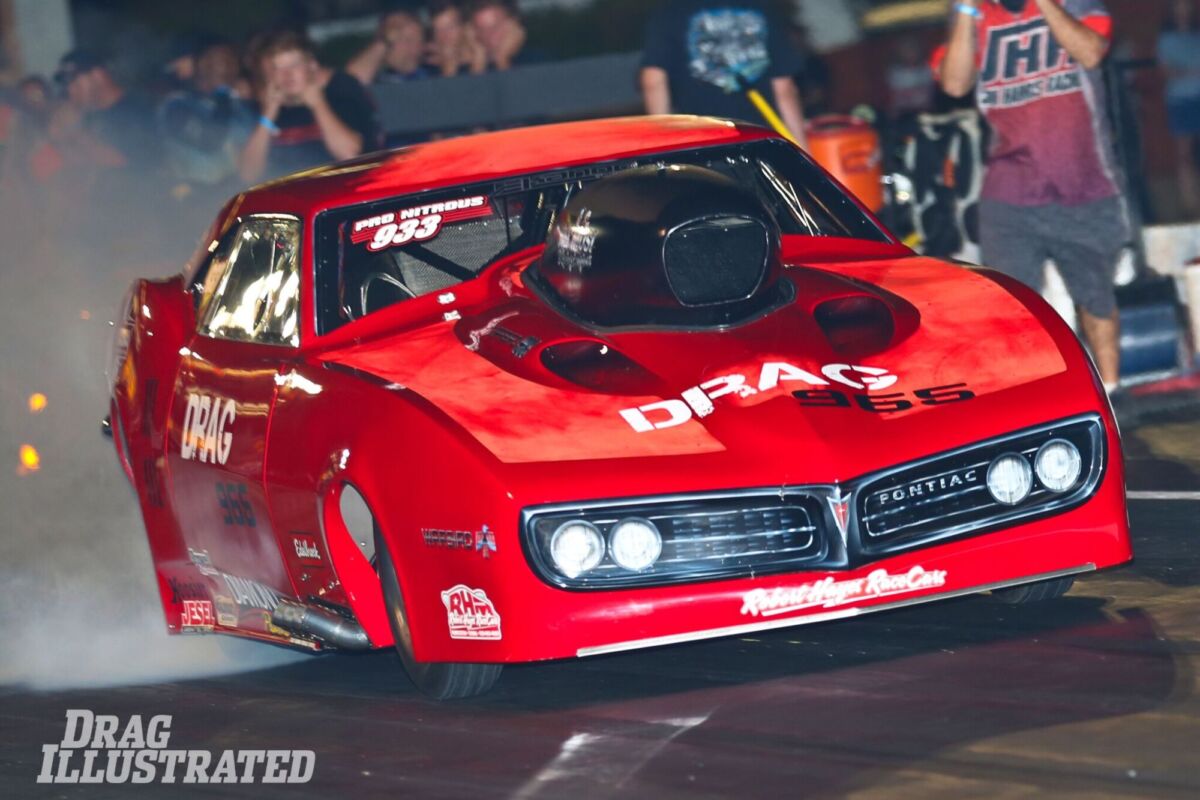
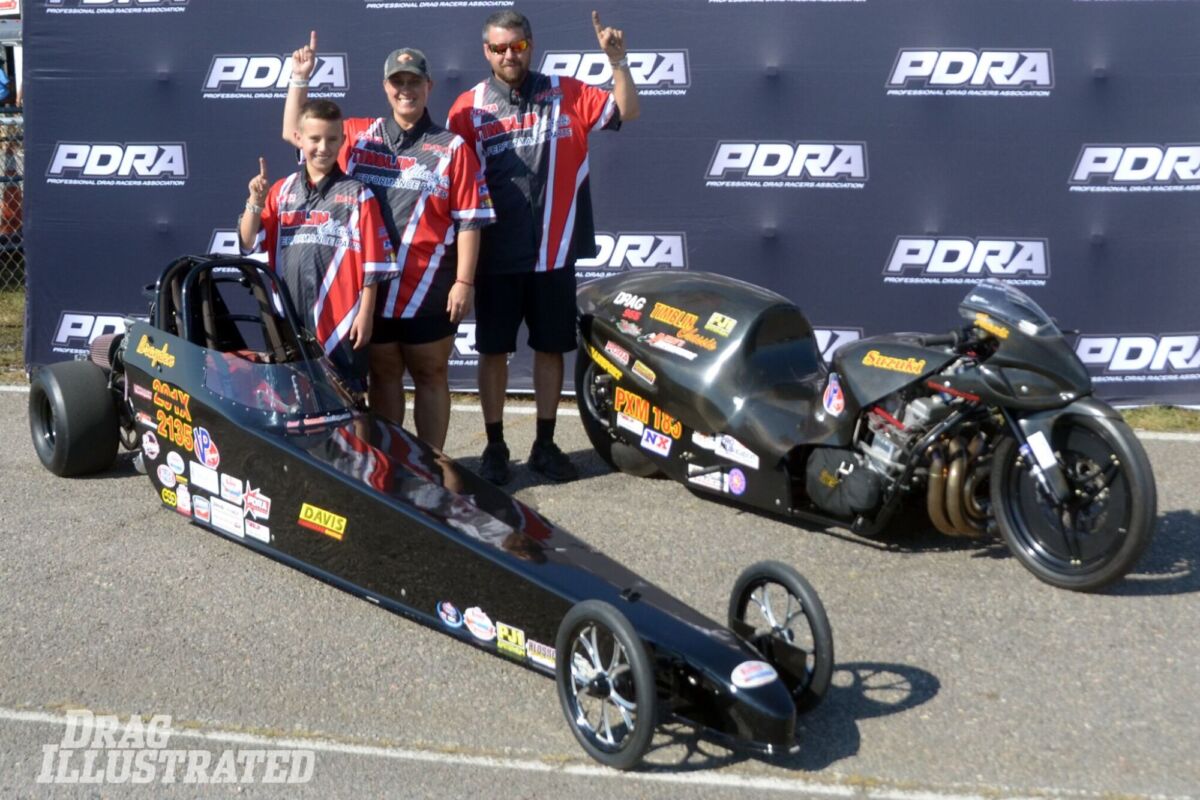


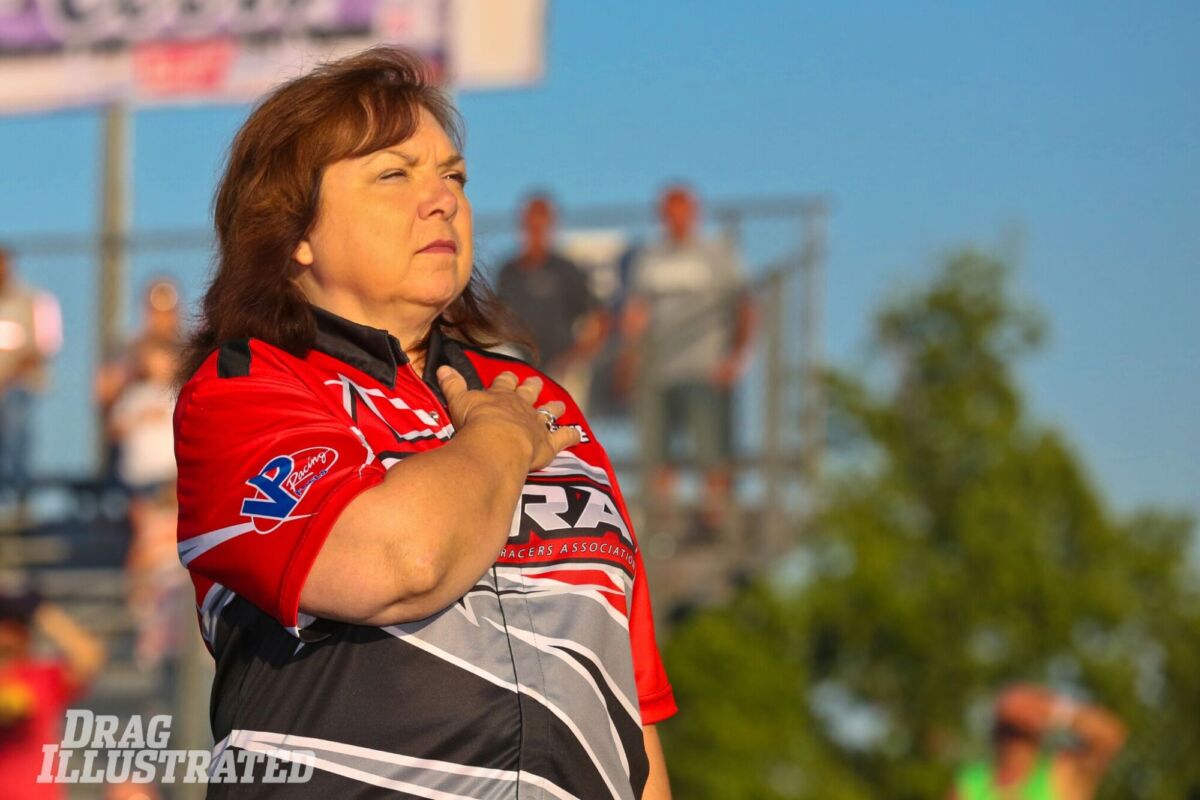
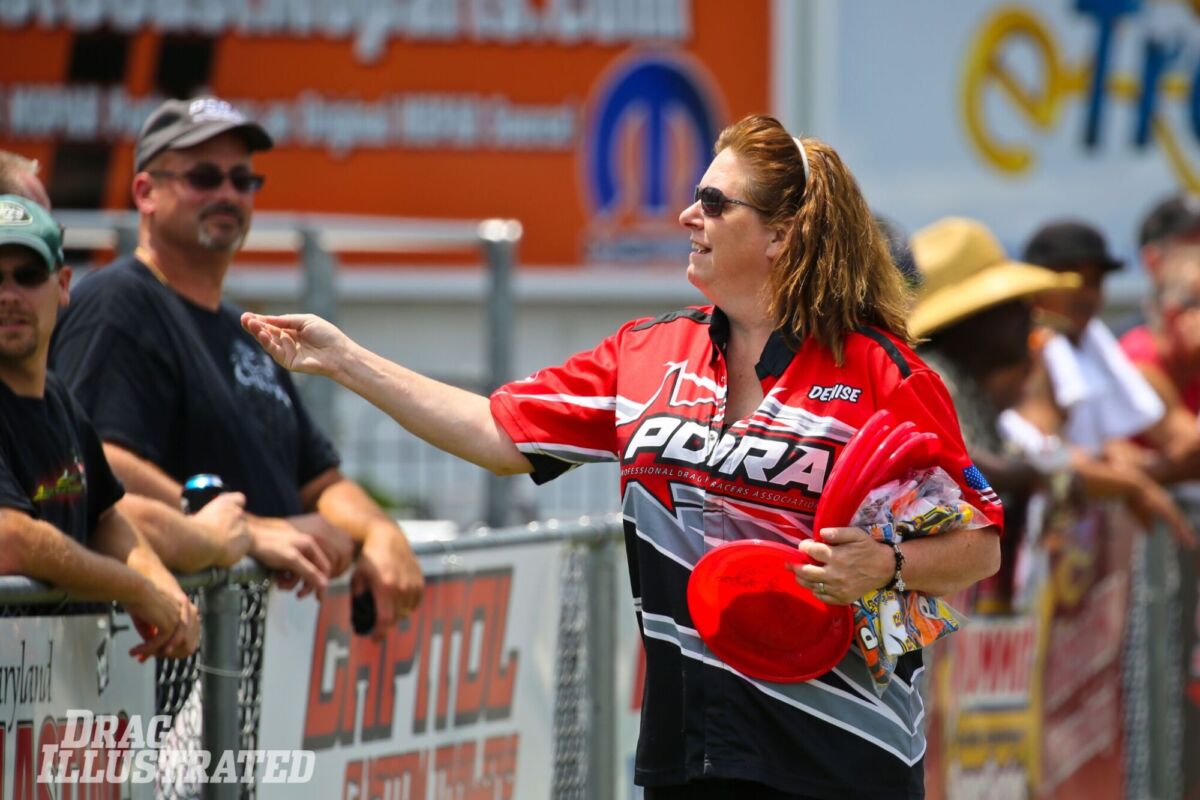
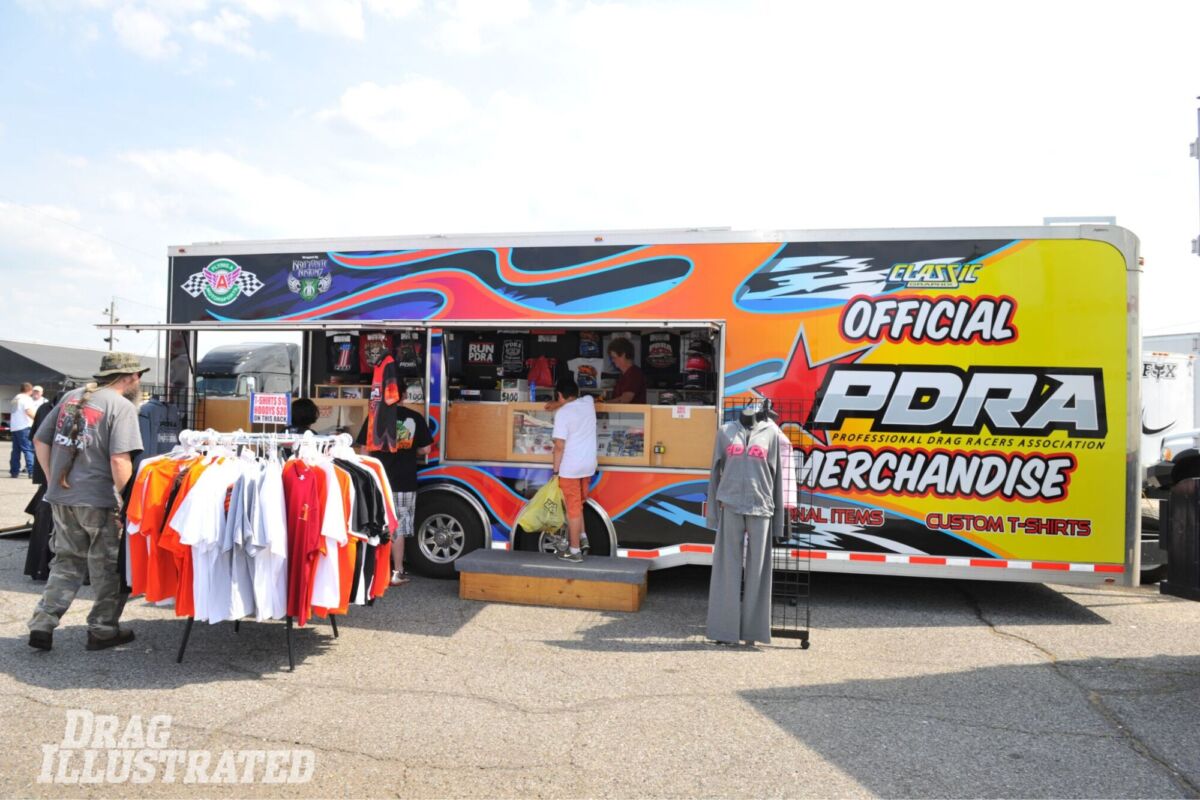


This story was originally published on January 2, 2024. 
